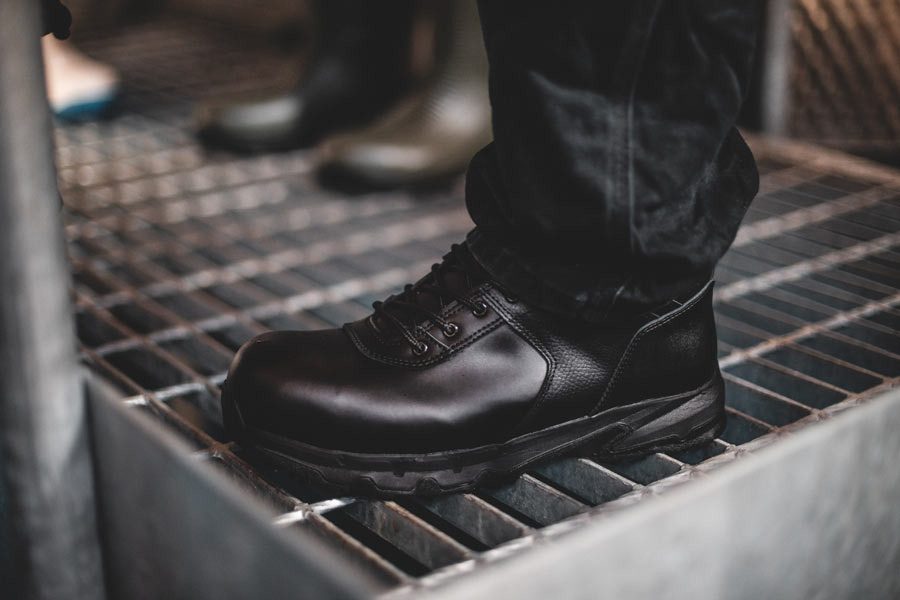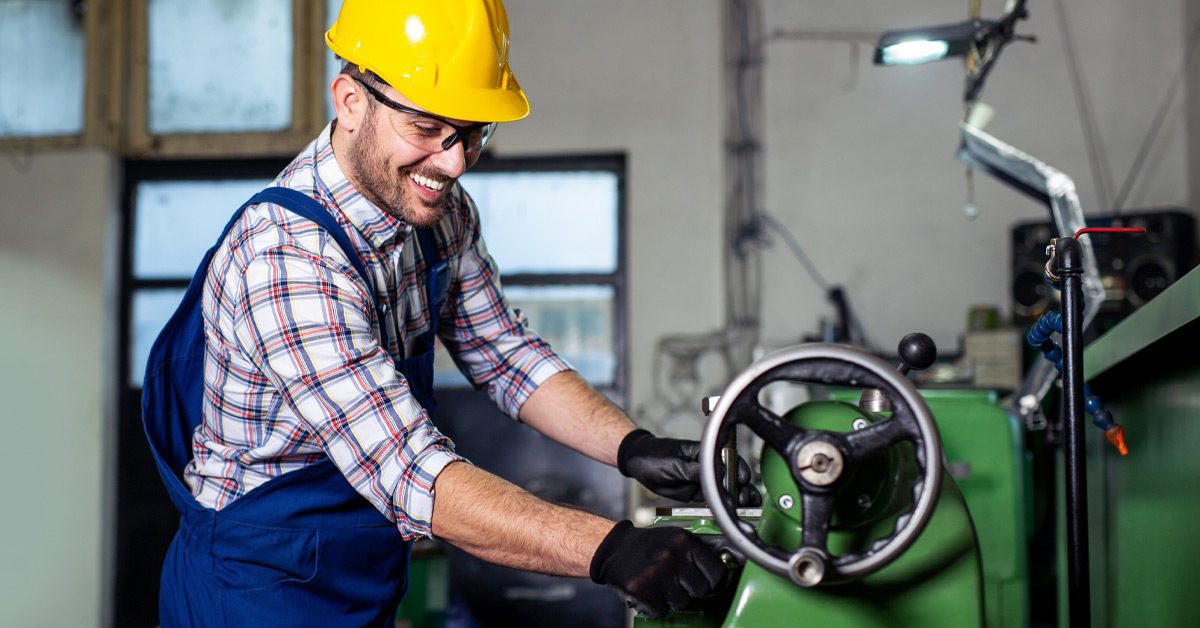In manufacturing, the health and safety of your employees is paramount. Foot injuries can be debilitating and can result in lost time and money. Factory and plant workers require maximum foot protection to guard against higher risks of injury by falling objects, from muscle strain, and being struck by machinery.
We are going to share our Shoes For Crews’ guide to foot protection in the manufacturing industry in this article to help you better protect and safeguard your workers.
Keep the Health and Safety at Work Act top of mind
As a manager, you will need to follow the protocol as established by The Health and Safety at Work Act of 1974. It states that the employer should make sure that any employees who may be exposed to health and safety risks are provided with proper safety footwear such as personal protective equipment (PPE). This is necessary only if every effort to mitigate, control or eliminate the risk or hazard has first been attempted.
In addition to this, factory and plant managers want to ensure that the Machinery Directive’s standards are in place. This directive has specific requirements for the machinery that is installed and operated in your facility. It is a good idea to review the standards and protocols to make sure yours is in compliance.
5 Main features that provide optimal foot protection
In order to know what type of foot protection your staff needs; it is important to identify the risks and demands of your employees. At Shoes For Crews, we are constantly improving the quality and durability of our footwear styles. Let us take a look at the must-have features we recommend wearing for optimal protection in manufacturing facilities.
1. Composite toe cap
Composite-toe shoes are resistant to the elements, and they can also help prevent crush and compression injuries. The likelihood of these types of injuries is high but having a toe cap with a minimum of 200 joules can reduce the risk of injuries when it comes to proper foot protection.
2. Puncture resistant
Preventing injuries is critical in the manufacturing industry which means having foot protection that is puncture-resistant is key. Given the nature of these wounds, they can develop further complications if not handled immediately. Some objects could also potentially create more harm by becoming embedded under the skin. That is why this feature not only can aid in preventing superficial injuries but also protecting workers from more serious ones.
3. Leather, rubber or other non-electrical conductors
Most, if not all, safety shoes are made of leather, rubber or contain some plastic elements which serve as non-electrical conductors. These types of materials work well in all types of elements. In some facilities, contact with liquids, wet surfaces and the potential to encounter electrical shock are a major concern. Footwear that does not conduct electricity must be worn in these environments to reduce the amount of static build-up and offer wearers full-body protection.
4. Removable insoles and extra cushioning
Manufacturing crews stand for long hours, so they need foot protection that supports and cushions their feet. Spending a lot of time walking and standing on hard surfaces such as concrete may cause workers to become overly tired and sore. Muscle strain and fatigue are some of the highest risks these workers face. Wearing proper shoes for factory workers that are well-equipped with removable insoles and extra cushioning can help prevent these conditions. As a part of our sustainability strategy, we are using recycled EVA material from old flip flops to construct new insoles.
5. Superior slip-resistant outsoles
Slips, trips and falls can occur at any facility and at any time resulting in many accidents annually. Mitigating high-risk areas and implementing proper safety measures are just one way to reduce these hazards. Another is making sure employees have properly fitted, slip-resistant footwear. With superior slip and clog-resistant technology, our safety shoe styles are fitted with wide-spaced traction lugs to prevent the tracking of contaminants and other debris.
At Shoes For Crews, we are committed to reducing our carbon footprint from 2022 and onward. That is why we are improving the design of our footwear solutions. Moving forward, they are now made from reusable sources such as rubber tyres, which are processed into granulate or powder form to later be used as components for our slip-resistant outsoles.
This guide to foot protection can serve as a refresher when it comes to the must-have features proper manufacturing workwear demands. Regular risk assessments and fostering a culture of safety and awareness are merely a couple of the suggestions we recommend revising when it comes to tips for health and safety in the manufacturing industry. Implementing proper measures and making sure high-quality equipment is made available to your crew will set them up for a productive working environment.
To learn more about a specific style or to receive a sample pair of safety shoes, contact one of our experts. Or download our Buyers Guide to see more information about our foot protection solutions or our sustainable strategy.






